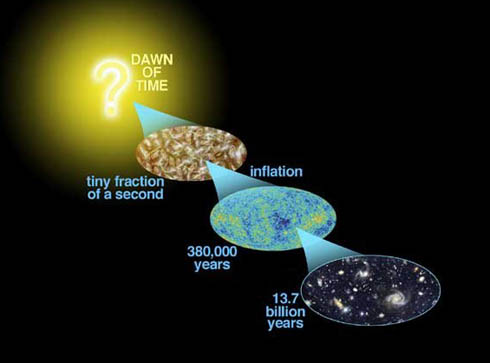

EVOLUTIONARY HIERARCHY
of Network Nature
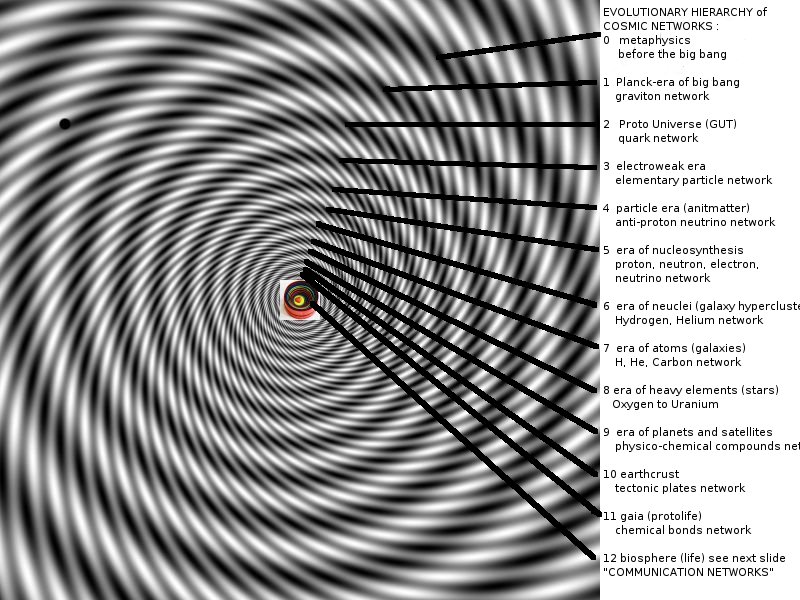
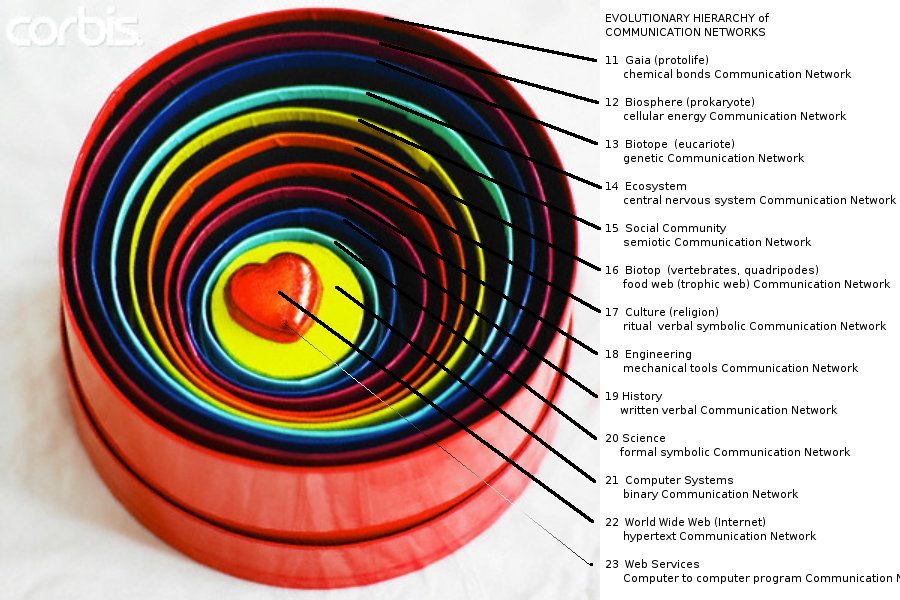
Evolutionary hierarchies are imbricated or embedded like "Russian dolls"
"Evolution is the computational co-evolution of global top-down differentiation and local bottom-up integration in the fractal hierarchy of nature."
Peter Winiwarter
"Reductionistic approaches to the dynamics of change ignores there are two, not just one,
type of causal relationship betwen parts and wholes. In the Western world, and the
tradition of the classical sciences that define its analyses, “upward causation” is
standard fare. This process describes the dynamics of parts in interaction with each
other creating forces that produce the substances which manifest at the level the whole.
Reasoning along these lines leads to the supposition that by working on the parts we
can affect healthy change in the whole. Of course, it is not always wrong to reason this
way – in fact, it works perfectly well in the case of relatively simple and straightforward
situations associated with particular individual problems and concerns. But in the case
of complex and dynamic problems, such as are involved in evolutionary processes, it is
too simplistic. Here the concept of “downward causation” suggested by Nobellaureate
neurophysiologist Roger Sperry is called for. Downward causation describes
the process by which the whole exercises what biologists refer to as determinant
influence on the parts. As Sperry’s work demonstrates, this is the kind of influence that
happens in the higher nervous system where the consciousness exhibited by the whole
brain governs the behavior of the brain’s neuronal networks and subassemblies.
General Evolution Theory (GET)
In recent years, an action-oriented systems approach to the development of human and
natural systems has emerged from the study of evolutionary processes in nature and
society. It is known as General Evolutionary Systems Theory (or General Evolution
Theory (GET), for short). It postulates that the evolutionary trend in the universe
constitutes a ‘cosmic process’ specified by a fundamental universal flow toward ever
increasing complexity. It is now understood that this dynamic of complexification
manifests itself through particular events and sequences of events that are not limited to
the domain of biological phenomenon but extend to include all aspects of change in
open dynamic systems with a throughput of information and energy. In other words,
evolution relates to the formation of stars from atoms, of Homo sapiens from the
anthropoid apes, as much as to the formation of complex societies from rudimentary
social systems.
GROWTH ≠ DEVELOPMENT ≠ EVOLUTION
At this point, it becomes important to distinguish between growth, development, and
evolution. Evolution, as we have seen, involves a process of directional (but nondirected)
change that leads from states closer to thermodynamic and chemical
equilibrium (the so called “first state”) to those further removed from it (the “third
state”). As such, it describes a tendency toward states further removed from
thermodynamic and chemical equilibrium. More simply put, it is “a general way of
conceptualizing the self-organizing selection process of the universe displayed in …
increasing complexity” (Reeves, 1992, 1102). Development really relates more to the
world of human affairs, and is part of our socially constructed reality in terms of what
we consider to be “desirable” objectives for us or others (and hence allows us to make
very subjective and relativistic statements about what and who is developed vs. those
that are not). Growth is something that we can measure through definable units of size
or scale, and relates to notions of physical size or numerical quantity. It provides a
metric that can be applied to many processes of change, but not to those that are
qualitative or conditional in nature.
Growth = an increase in size or quantity
Development = an amelioration of conditions or quality
Evolution = a tendency toward greater structural complexity and
organizational simplicity, more efficient modes of
operation, and greater dynamic harmony
Beyond Darwinism
a series of random genetic mutations is not likely to have
produced all the complex species indicated by observation and the fossil record within
the time that was available for biological evolution on this planet. … In any case, if
random mutation and natural selection require more time to produce viable species
than the fossil record indicates, then Darwin’s theory, if not quite mistaken, is at least
incomplete” (E. Laszlo, 2000).
Biologist Lewis Thomas expresses his views on the subject as
follows:
One major question needing to be examined is the general attitude of
nature. A century ago there was a consensus about this; nature was ‘red
in tooth and claw,’ evolution was a record of open warfare among
competing species, the fittest were the strongest aggressors, and so forth.
Now it begins to look different. ... The urge to form partnerships, to link
up in collaborative arrangements, is perhaps the oldest, strongest, and
most fundamental force in nature. There are no solitary, free-living
creatures, every form of life is dependent on other forms. (Thomas, 1980,1)
Margulis explains this vital mutualism like this:
All organisms are dependent on others for the completion of their life
cycles. Never, even in spaces as small as a cubic meter, is a living
community of organisms restricted to members of only a single species.
Diversity, both morphological and metabolic, is the rule. Most organisms
depend directly on others for nutrients and gases. Only photo- and
chemo-autotrophic bacteria produce all their organic requirements from
inorganic constituents; even they require food, gases such as oxygen,
carbon dioxide, and ammonia, which although inorganic, are end
products of the metabolism of other organisms. Heterotrophic organisms
require organic compounds as food; except in rare cases of cannibalism,
this food comprises organisms of other species or their remains. (Margulis,
1981, 163)
In nature, community means that “every species ... directly or indirectly, supplies
essential materials or services to one or more of its associates” (Dice, 1962, 290). Such a
conception of community brings with it deeper insights, such as “... the notion of life as
self-directed movement. Nature is not at war, one organism with another. Nature is an
alliance founded on cooperation” (Augros & Stanciu, 1987, 129.).
To give an idea of the coordination of activities involved, imagine an
immensely huge superorchestra playing with instruments spanning an
incredible spectrum of sizes from a piccolo of 10-9 meter up to a bassoon or
bass viol of a meter or more, and a musical range of 72 octaves. The
amazing thing about this superorchestra is that it never ceases to play out
our individual songlines, with a certain recurring rhythm and beat, but in
endless variations that never repeat exactly. Always, there is something
new, something made up as it goes along. It can change key, change
tempo, change tune perfectly, as it feels like it, or as the situation
demands, spontaneously and without hesitation. Furthermore, each and
every player, however small, can enjoy maximum freedom of expression,
improvising from moment to moment, while remaining in step and in
tune with the whole. (Ho, 1998, 55)
Through such an appreciation we can come to
recognize how “even the study of a whole organism can be reductionistic if it ignores
habitat, niche, and relation to other living things. ... No organism makes sense in
abstraction from its natural living condition” (Ho, 1998, 230).
In the final analysis, together with all that with which we interact, we are evolution.
Citations from and by Alexander Laszlo "The Nature of Evolution", World Futures, the journal for General Evolution (to be published)
John Smart
EvoDevoUniverse ? A Framework for Speculations on Cosmic Culture
in Cosmos and Culture, Steven J. Dick (ed.), NASA Press (forthcoming).
Abstract evodevouniverse
The underlying paradigm for cosmology is theoretical physics. In this paper we explore ways this framework might be extended with insights from information and computation studies and evolutionary developmental (evo-devo) biology. We also briefly consider implications of such a framework for cosmic culture. In organic systems, adaptive evolutionary development guides the production of intelligent, ordered and complex structures. In such systems we can distinguish evolutionary processes which are chaotic, creative, and contingently adaptive, and developmental processes which produce convergent, conservative, and systemically statistically predictable structures and trajectories.
By analogy with two genetically identical twins, would two parametrically identical universes each engage in unpredictably different and unique evolutionary pathways over their lifespan, and at the same time, share a broad set of predictable developmental milestones, structure and function between them? We suggest so.
We will briefly model our universe as an informational, evolutionary and developmental system−as an info evo devo universe (abbreviated ‘evo devo universe’ hereafter). Our framework will try to reconcile the majority of apparently unpredictable, evolutionary features of universal emergence with a special subset of statistically predictable and apparently developmental universal trends, including:
• accelerating emergences (significant advances), in universal complexity, a pattern seen over the last half—but not the first half—of the universe’s history
• increasing spatial and temporal locality of universal complexity development
• apparently hierarchical emergence of increasingly matter- and energy-dense, and matter- and energy-efficient ‘substrates’ (platforms) for adaptation and computation
• the apparent accelerating trend, on Earth, toward increasingly postbiological (technological) systems of physical transformation and computation.
http://plato.stanford.edu/entries/connectionism/
Who produces Worldviews?
The Growth of Structural and Functional Complexity during Evolution
Center "Leo Apostel", Free University of Brussels, Pleinlaan 2, B-1050 Brussels, Belgium
E-mail: fheyligh@vnet3.vub.ac.be
ABSTRACT. Although the growth of complexity during evolution seems obvious to most observers, it has recently been questioned whether such increase objectively exists. The present paper tries to clarify the issue by analysing the concept of complexity as a combination of variety and dependency. It is argued that variation and selection automatically produce differentiation (variety) and integration (dependency), for living as well as non-living systems. Structural complexification is produced by spatial differentiation and the selection of fit linkages between components. Functional complexification follows from the need to increase the variety of actions in order to cope with more diverse environmental perturbations, and the need to integrate actions into higher-order complexes in order to minimize the difficulty of decision-making. Both processes produce a hierarchy of nested supersystems or metasystems, and tend to be self-reinforcing. Though simplicity is a selective factor, it does not tend to arrest or reverse overall complexification. Increase in the absolute components of fitness, which is associated with complexification, defines a preferred direction for evolution, although the process remains wholly unpredictable.
Evolution and the Law of Accelerating Returns
| by |
Ray Kurzweil |
Mihalyi Csikszentmihalyi (1993)
to put it quite plainly: “In order to make choices that will lead to a better future, it helps to beaware of the forces at work in evolution."
Table of Evolutionary Hierarchies
bonds linking the network
| 10-35 sec |
| astrophysics theory |
| 10-10 sec |
| astrophysics theory |
| 10-3 sec |
| astrophysics theory |
| astrophysics theory |
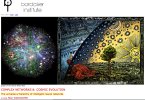
bordalier institute home
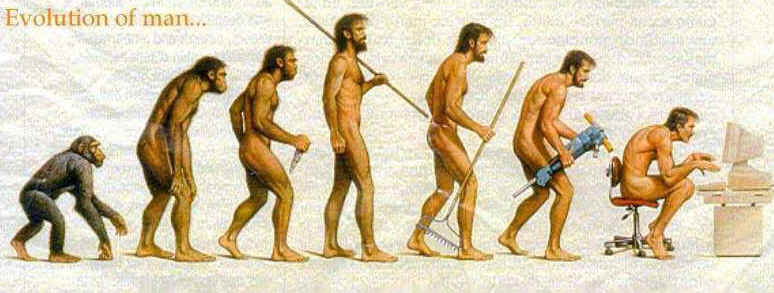
billion
billions
billions
hypercycles ATP
billions
billions
billions
billions
| -1.0x109
years billions |
ants, termites, bees, humans
| -500x106
years millions |
millions
linguistics,
religion
communication systems
homo scientificus: formulas, laws
systems theories, systems laws
years
URL universal resource locator on computer networks
artificial neural networks, scientometrics
years
scientometrics
metaphilosophy
Semantic_Web
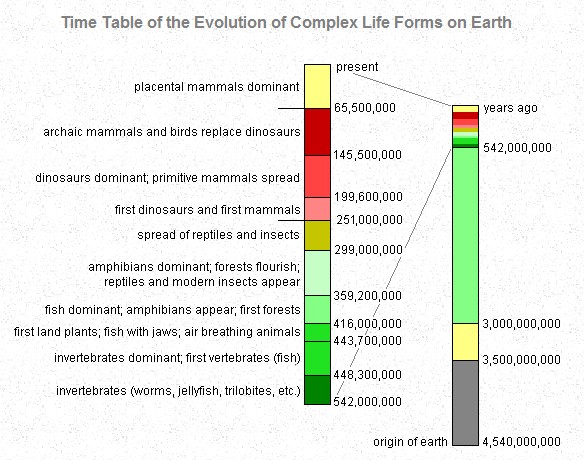
Complex multicellular forms of life are surprisingly recent on our planet. They have existed only for about 600,000,000 years or slightly more. When these creatures began to appear, 87% of the earth's existence had already gone by, and 83% of the total time life has existed had already passed as well.
The evolution of life has not been a smooth process of ever increasing numbers of species. There have been major setbacks caused by global catastrophic events, such as ice ages, immense volcanic eruptions, asteroid impacts, and major fluctuations in the amount of oxygen in the atmosphere. The result has been at least six episodes of mass extinction and many minor ones.
|
Approximate Date
Of Extinction Event |
Approximate Duration (years) |
Percent of Species That Became Extinct |
||
|---|---|---|---|---|
| 65,500,000 (end of Mesozoic Era) | <1 million | 76% | ||
| 200,000,000 (end of Triassic Period) | 3-4 million | 80% | ||
| 251,000,000 (end of Permian Period) | unknown | 95-96% | ||
| 360,000,000 (late Devonian Period) | <3 million | 83% | ||
| 444,000,000 (end of Ordovician Period) | 10 million | 85% | ||
| 488,000,000 (end of Cambrian Period) | unknown | unknown | ||
|
|
||||
| Source: Gibbs, W. Wayt (2001) "On the Termination of Species", Scientific American Vol. 285, No. 5. | ||||
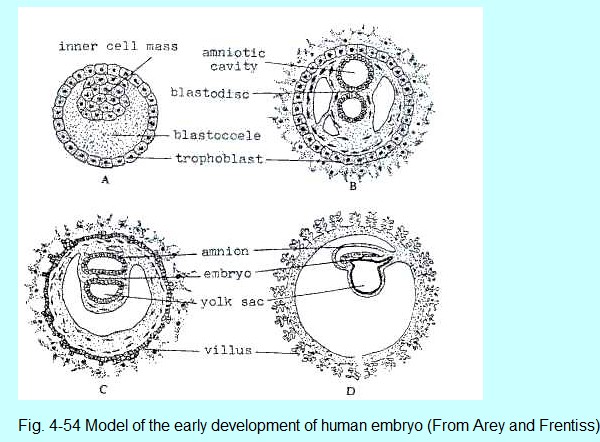
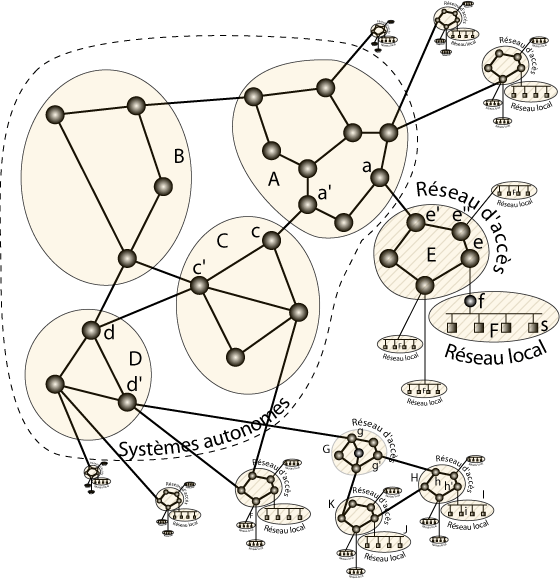
present internet structure or embryogenesis
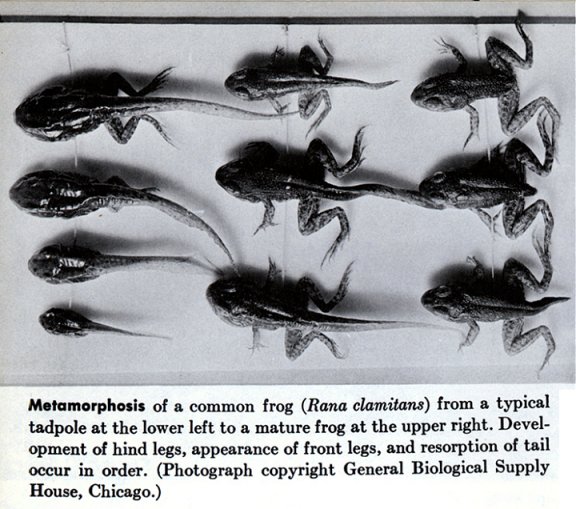
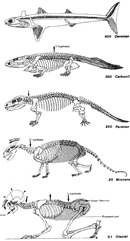
remember Haeckel's theory of recapitulation; "ontogenesis (development) repeats phylogenesis (evolution)".
The theory of recapitulation, also called the biogenetic law or embryological parallelism, and often expressed as ontogeny recapitulates phylogeny, was first put forward in 1866 by German zoologist Ernst Haeckel. Haekel proposed that the embryonal development of an individual organism (its ontogeny) followed the same path as the evolutionary history of its species (its phylogeny). The theory has been discredited.
Note by the author:
It's not the adult form of evolution which is recapulated in development, it's the abstract structure of the building plan. Such the development of internet is predictable in terms of abstract structure. A nucleus of a semantic Internet 2 within Internet 1, "RNA" and selfreplication of Web Services, "DNA" code of semantic Internet Services, "sexual replication" of Webs, "self-conscious" Webs etc.
The future is full of evolutionary surprises.
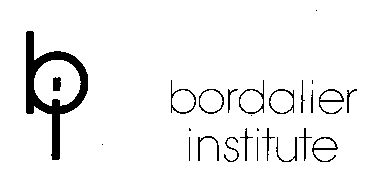 contact: winiwarter@bordalierinstitute.com
contact: winiwarter@bordalierinstitute.com